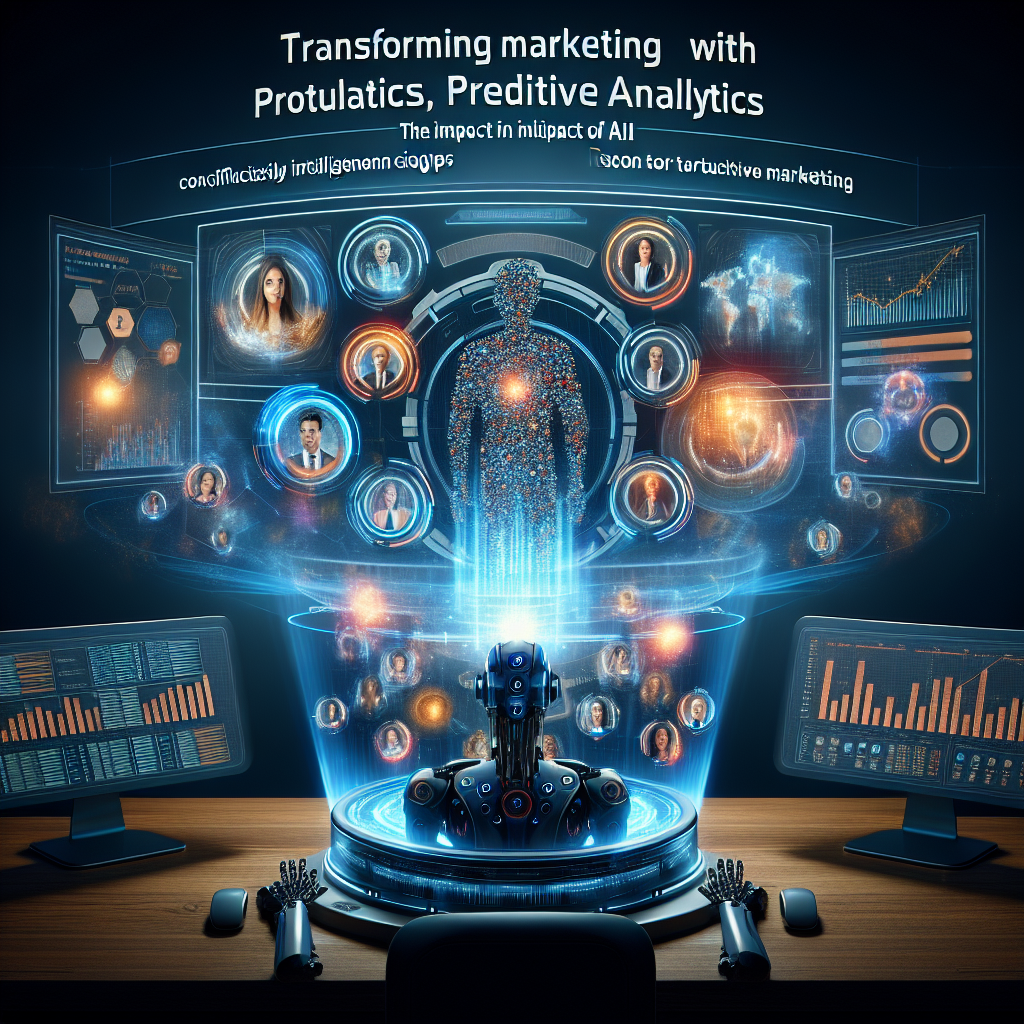In today’s digital landscape, marketing is rapidly evolving. As consumer behaviors grow more complex and data-driven, businesses leverage predictive analytics powered by artificial intelligence (AI) to refine their marketing strategies. This article examines how predictive analytics is transforming marketing campaigns by providing insights that enhance engagement and profitability.
Grasping Predictive Analytics
Predictive analytics utilizes statistical techniques, machine learning algorithms, and historical data to anticipate future outcomes. Within marketing, it aids businesses in understanding patterns and trends linked to consumer behavior, sales, and market dynamics. By examining previous interactions, purchase histories, and demographic data, marketers can effectively forecast consumer reactions to various marketing approaches.
The Impact of AI on Predictive Analytics
AI technologies amplify the effectiveness of predictive analytics by automating data analysis, providing real-time insights, and enabling highly personalized customer experiences. Key technologies include:
-
Machine Learning: Algorithms that learn from data patterns and enhance predictions over time. Machine learning assists in customer segmentation, optimizing pricing strategies, and predicting churn.
-
Natural Language Processing (NLP): This technology allows marketers to analyze consumer sentiments from social media and reviews, yielding valuable insights into brand perception.
- Deep Learning: A subset of machine learning that emulates the human brain’s neuron network, deep learning excels in processing vast amounts of unstructured data, such as images and videos, informing marketing strategies.
Advantages of Predictive Analytics in Marketing
1. Enhanced Targeting and Segmentation
Predictive analytics empowers marketers to more accurately segment their audience by identifying specific traits and behaviors that indicate purchasing behavior. This targeted strategy not only augments campaign effectiveness but also lowers marketing expenditures by concentrating resources on high-potential leads.
2. Improved Customer Engagement
Through predictive models, marketers can foresee customer needs and preferences, facilitating personalized interactions. For example, AI can recommend products based on prior purchases, suggest relevant content, or identify optimal times to engage with customers. This personalized approach cultivates stronger relationships and boosts customer loyalty.
3. Optimized Campaign Performance
Predictive analytics allows marketers to test different campaign elements—such as messaging, design, and channels—to discover which combinations yield the best results. Real-time data analysis facilitates quick adjustments, optimizing campaign effectiveness and return on investment (ROI).
4. Churn Prediction
A vital application of predictive analytics is identifying customers at risk of churn. By analyzing customer behavior patterns, businesses can implement retention strategies before losing valuable clients, thereby enhancing customer lifetime value.
Practical Uses of Predictive Analytics in Marketing
1. E-commerce Personalization
Retail leaders like Amazon employ predictive analytics to recommend products based on browsing history and previous purchases. This enhances user experience while significantly increasing conversion rates.
2. Dynamic Pricing Strategies
Airlines and hotel chains utilize predictive analytics to adjust pricing in response to demand fluctuations, competitor pricing, and consumer behavior. This adaptive approach ensures optimal pricing, resulting in enhanced sales and customer satisfaction.
3. Targeted Email Marketing
Companies like Spotify leverage predictive analytics to fine-tune their email marketing methodologies, delivering customized playlists and recommendations based on user behavior. This targeted strategy results in higher open and engagement rates.
Challenges and Considerations
Despite its advantages, implementing predictive analytics in marketing strategies presents challenges:
- Data Privacy: With growing regulations on data usage (e.g., GDPR), marketers must balance personalized marketing with consumer privacy concerns.
- Data Quality: Predictive models rely heavily on the quality of the data used. Inaccurate or biased data can lead to misguided insights and ineffective campaigns.
- Skill Gaps: The integration of AI-powered predictive analytics necessitates skilled professionals who can interpret data and generate actionable insights.
The Future of Predictive Analytics in Marketing
As AI technology progresses, the capabilities of predictive analytics will expand. We can anticipate more sophisticated algorithms, improved data integration, and a heightened emphasis on consumer experience. Ultimately, businesses that adeptly leverage these advancements will secure a significant competitive advantage.
Conclusion
Predictive analytics, empowered by AI, is revolutionizing the marketing sector by enabling businesses to make informed decisions, personalize customer experiences, and optimize campaigns for success. As data continues to grow robust and AI technologies advance, the future of marketing will be propelled by insights, facilitating more effective engagement and higher returns on investment. Marketers who embrace these transformations will be poised to excel in the ever-evolving digital marketplace.

